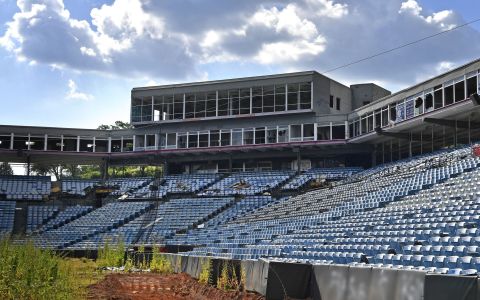As cities throughout the South move to take down monuments of Confederate leaders, the mayor of Nashville unveiled a plan this week for the city to honor an overlooked part of the Civil War era: the contributions and sacrifices of slaves.
Under the proposal, announced Tuesday by Mayor David Briley near a Union Army stronghold built by thousands of former slaves, green space would be carved out in the heart of Nashville and a historic site rich in African-American history would be preserved. He said it was time for Nashville to recognize its slavery past.
“Our country, our city has never really done what is necessary to acknowledge the sacrifice of the slaves in our country, to atone for what is and will be a great scar on our nation’s history, or to take steps toward reconciliation,” Mr. Briley said at a news conference near the stronghold, Fort Negley.
The plan, which will require City Council approval, comes as other parts of the South engage in tense debates over race and history and what many see as Confederate statues that champion white supremacy. Tempers have flared in cities like Charlottesville, Va., as they confront their past and move to tear down monuments.
In Nashville, the future of the land around Fort Negley has been tangled up in its own fierce debate, pitting preservationists against those who wanted the site turned into the city’s latest retail, entertainment and housing development. At issue is what should become of the site of Greer Stadium, a 40-year-old minor league baseball park built next to the fort that has fallen into disrepair since the team departed in 2014.
Last year, a city-commissioned archaeological survey of the land all but killed any plans for major redevelopment. The survey found that human remains are likely still buried at the site, possibly of former slaves who built Fort Negley. At the end of 1862, Union soldiers forced more than 2,700 black laborers — mostly escaped slaves — to build the stronghold under horrible conditions. Hundreds died during the construction.

After the Civil War, many of the laborers settled near the site, the start of a Nashville neighborhood still largely populated by African-Americans.
Mr. Briley said the new proposal for the land, a stark reversal from what city leaders had once pursued, was the right thing to do. He estimated it would cost the city $1 million to demolish Greer Stadium.
“It’s also a unique way for us to pay attention to the history of this city and what happened here more than 150 years ago,” he said.
plans to build a park honoring slaves were started under the previous mayor, Megan Barry, who resigned on March 6 after pleading guilty to a felony theft charge related to her affair with a police officer in charge of her security detail.
While the major redevelopment plans were derailed after the archaeological study, the mayor’s announcement still stunned those who had advocated preservation of the land. Betsy Phillips, a Nashville historian who wrote articles about the Fort Negley debate for The Nashville Scene, said she was sort of in shock after the announcement.
“I already felt lucky that we got the development stopped,” Ms. Phillips said in an interview. “But we thought we already had all the good news to be had.”
Ms. Phillips said the proposal would allow Nashville to protect the historical site and what is buried there as well as to call attention to the city’s importance in the Civil War. The site of the Battle of Nashville in 1864, which delivered a crushing blow to the Confederacy and signaled an end to the war, was not preserved and is now a residential and commercial complex.
“Nashville and Civil War history is really important, and to not have a place where tourists or history buffs could go and see something would just have been a shame,” Ms. Phillips said. “We had lost this part of Nashville’s history.”
–nytimes.com



